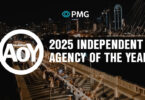Every two years, US political campaigns descend upon the advertising landscape, feasting on inventory and bringing with them a host of challenges for nonpolitical advertisers—challenges that only seem to intensify with each election cycle.
2024 is no exception. A highly divisive Presidential race, hotly contested Senate battles, and polarizing ballot measures are converging to drive unprecedented political ad spend. At the same time, advancements in generative AI could potentially create a landscape characterized by groundbreaking volumes of mis- and disinformation, especially on social media.
Marketing and advertising leaders from outside the world of politics will need to navigate that landscape and determine how to make the most of their spend amidst high demand and localized inventory scarcity, while simultaneously protecting their clients or brands from the potential pitfalls of adjacency to negative political content and AI-generated mis-and disinformation.
To do so, marketers must understand when and where these issues will affect them (and their ad dollars) most acutely, and should dial up their placement control to protect brand safety.
Inventory Considerations
This year’s political ad spend is forecast to land between $10.2 billion and $12 billion—numbers that would demonstrate a 13%-to-30% increase from the 2019-2020 election cycle. For advertisers, this glut of money can bring higher CPMs—especially during certain time periods, in certain locations, and on certain channels. Inventory scarcity is another consideration, although there’s enough inventory out there that price will be most advertisers’ primary concern.
Timing Considerations
Political ad spend stats from Basis platform in 2022 and 2020 show that about 50% of the year’s political dollars ran in the 30 days leading up to the election, with 25% running in the ten days leading up to Election Day. In 2024, we may see that run on political ads start a bit earlier as a result of early in-person and mail-in voting, but the election likely won’t dominate advertising too much sooner than that. Historically, we have seen gradual increases in the numbers of individuals using these early voting methods, but those early voters are generally not the undecided voters that political advertisers most want to reach. That means that advertisers will see the highest prices and the scarcest inventory for all of October and into November.
There is also a chance that some of these races might not be determined on Election Day, as some states may end up having runoffs, like Georgia did in 2020. If that is the case, these inventory and brand safety issues will continue for advertisers in those specific locations until those elections are completed in the traditionally retail-heavy months of November and December.
Location Considerations
Speaking of location, geography is the other major factor that will impact advertisers during this year’s election cycle. Political campaigns will heavily target certain swing states and counties, and ad rates and inventory will be much more affected in those areas than those that reliably vote blue or red.
For the presidential election, there are about seven states that will be hotly contested and see an increased proportion of presidential campaign ads: Nevada, Arizona, Michigan, Wisconsin, Georgia, Pennsylvania, and North Carolina. Within those states, most political consultants think certain counties will swing the election, and hyperlocal targeting within those counties will mean higher CPMs and scarcer inventory.
Beyond the Presidential election, key Senate races and divisive ballot measures will also lead to high volumes of political advertising in cities like Las Vegas, Philadelphia, Phoenix, Reno, Pittsburgh, Missoula, Billings, Boston, Wilkes Barre-Scranton, Butte-Bozeman, Detroit, Los Angeles, Charlotte, Atlanta, Cleveland, Cincinnati, Harrisburg, DC, and Raleigh-Durham.
Marketers must research the states, counties, and cities in which they plan to advertise this year to determine how divisive the races and issues on the 2024 ballot will be in those locales, as that will correspond to how acutely political advertising will reshape the media landscape.
Channels Most Impacted by Political Advertising
Political advertisers love video, so the increased demand for advertising space across media will be felt most acutely on CTV, linear, online display video, and those social networks that accept political ad dollars. The impact on CTV will be especially pronounced: 45% of all digital political ad spend in 2024 will go to CTV, up a whopping 26% from the 2020 election cycle.
Additionally, advertising on linear television comes with the possibility of actually getting crowded out of ad slots. Because of the FCC’s Equal Time Rule, if a candidate wants to advertise and buy 60 seconds on a certain channel, that channel must offer other candidates a comparable amount of time and a comparable placement. This can end up bouncing other advertisers in situations where there is limited inventory, and while somewhat unusual, it is most likely to occur during the leadup to Election Day in competitive locations.
Prioritize Brand Safety
The election season poses multiple brand safety threats, manifesting in the form of possible adjacency to negative political content and/or to political disinformation and misinformation.
Political ads are often negative (or come with negative baggage), and political content can be divisive, so advertisers should consider how comfortable they feel having their ads show up nearby. One survey found that exposure to negative political advertising provokes “extremely negative emotions” in viewers, and that those feelings can have a detrimental impact on how consumers perceive brands whose ads run alongside them. To avoid this, advertisers may want to take measures to avoid adjacency to political ads and content (more on this in a moment).
While negative political advertising has been around for a long time, the volume of election-related mis- and disinformation expected this year poses a newer challenge for advertisers. This kind of content was an issue in 2020, but experts expect it to be even more of a threat in 2024 as a result of the emergence of generative AI, which makes it easy for bad actors to generate huge amounts of false or misleading content. Even outside of the context of this year’s election cycle, close to 100% of advertisers agree that GenAI presents a brand safety and misinformation risk for digital marketers, with 84.2% viewing it as a moderate to significant risk.
Compounding this is wave of layoffs in recent years affecting the trust and safety teams at Meta, X, Alphabet, and Amazon, including employees tasked with addressing mis- and disinformation. It’s particularly worrisome considering that social media is the channel where misinformation gets amplified most. Social platforms have promised to release new tools designed to protect consumers and advertisers from misinformation this year, and advertisers should keep an eye out for those capabilities, but social could present unique brand safety risks this election season.
Considering this environment, leaders will need to dial up their placement control, and there are a variety of ways to accomplish this. Advertisers can work with partners like NOBL, ComScore, Oracle, and Peer39 to ensure their ads are shown in premium, non-divisive environments, and implement allow lists and block lists—such as dynamic MFA block lists—to avoid political and low-quality websites. Utilizing smart contextual targeting is another way to make sure messages only show up in desired environments, and investing in programmatic guaranteed and PMPs can further secure premium placement. Finally, teams may want to avoid certain social platforms during the lead-up to Election Day—for example, X will likely be a hub of political conversation, which could come with increased brand safety concerns. Instead, advertisers may opt to shift their spend toward places that don’t accept political advertising, such as Netflix, Disney+, Pinterest, and LinkedIn, during this time period.
Additionally, marketers who want their brands to stand out from negative and weighty political content can embrace lighter, more upbeat, and humor-driven creative to better appeal to weary consumers.
Overall, it’s critical that advertisers factor in these challenges when planning their campaigns so that their messages show up in places that can effectively—and positively—reach consumers.
Wrapping Up
In what promises to be a tumultuous election year with record political ad spend, marketers who take a “business as usual” approach to their campaigns risk misallocating their spend, alienating potential customers, and taking major hits to brand perception. It’s essential that leaders plan their campaigns around how political advertising will impact the landscape—especially during the start of Q4.










